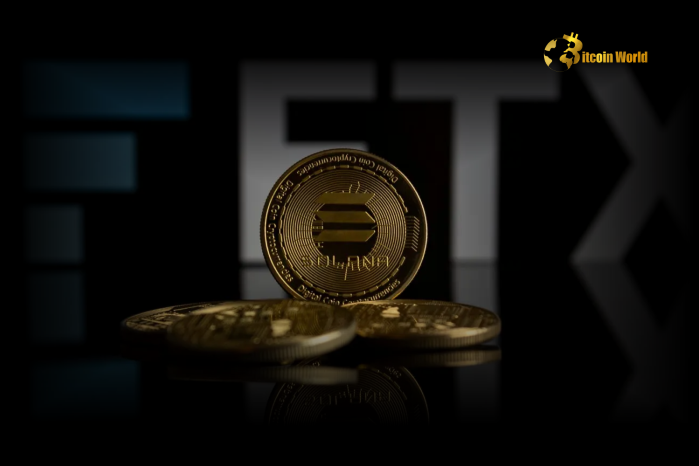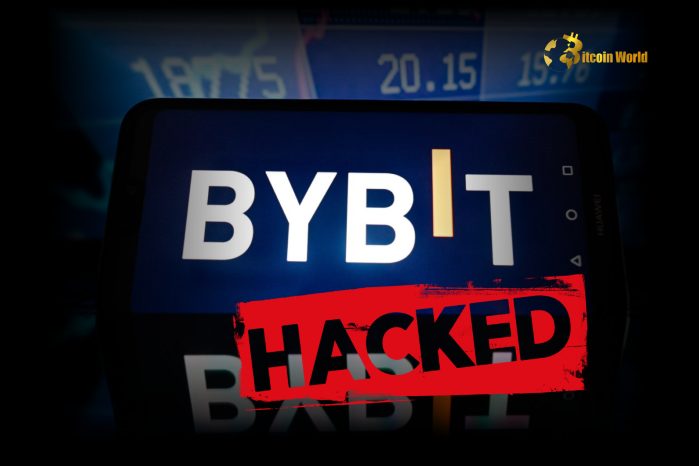
A Fidelity Digital Assets report indicates that Bitcoin’s primary scaling solution is growing at roughly twice the rate shown by public data because much of its network activity remains private. The Lightning Network Is Growing and Institutions Are Taking Notice The total capacity of Bitcoin’s Lightning Network has jumped 384% since 2020 as an increasing
Bitcoin.com
You can visit the page to read the article.
Source: Bitcoin.com
Disclaimer: The opinion expressed here is not investment advice – it is provided for informational purposes only. It does not necessarily reflect the opinion of BitMaden. Every investment and all trading involves risk, so you should always perform your own research prior to making decisions. We do not recommend investing money you cannot afford to lose.
Hopeful Comeback: 79% of FTX Creditors Plan Bold Crypto Reinvestment, Eyeing Solana & Memecoins

In a surprising turn of events, even amidst the fallout from the FTX collapse, a beacon of optimism shines through the crypto community. A recent survey has unveiled a fascinating trend: a significant majority of FTX creditors are not deterred but are in fact gearing up to double down on the digital asset space. This news sparks a wave of hopeful anticipation for the future of the crypto market. Let’s dive into the details of this intriguing survey and explore what it means for the evolving landscape of cryptocurrencies. Why FTX Creditors Crypto Reinvestment Signals Market Resilience Despite the financial setbacks experienced by FTX users, their unwavering belief in the potential of cryptocurrencies is truly remarkable. The survey, conducted by NFTevening, polled 1,016 FTX creditors and revealed that a staggering 79% of them are planning to reinvest their recovered funds back into the crypto ecosystem. This isn’t just a small fraction; it represents a strong majority signaling robust confidence in the long-term prospects of digital assets. This planned FTX creditors crypto reinvestment demonstrates a powerful resilience within the crypto community. Instead of being discouraged by past events, these investors are seeing the FTX situation as a chapter, not the end of the story. This collective decision to reinvest is fueled by several factors: Long-term Belief: Many creditors view the FTX incident as an isolated case of mismanagement rather than a fundamental flaw in cryptocurrency technology or its potential. Opportunity in the Dip: The market correction following events like the FTX collapse can be seen as a buying opportunity. Savvy investors often look to accumulate assets when prices are lower, anticipating future growth. Decentralized Finance (DeFi) and Innovation: The core principles of DeFi, offering transparency and control, remain attractive. The continuous innovation within the crypto space, with new projects and technologies emerging, keeps the sector vibrant and promising. This hopeful outlook from FTX creditors provides a strong counter-narrative to the negative sentiment that often follows market downturns. It highlights the enduring appeal and perceived potential of cryptocurrencies as a viable asset class. Solana Investment: The Preferred Choice for Reinvestment Delving deeper into the survey, it’s clear where a significant portion of this reinvestment is headed. Among the 79% planning to reinvest, a notable 62% have their sights set on acquiring Solana (SOL). This makes Solana investment the clear frontrunner for these returning crypto enthusiasts. But why Solana? Solana has consistently been recognized for its high transaction speeds and lower fees compared to some other major blockchains. Despite facing its own challenges, including network outages and price volatility, Solana’s technology and vibrant ecosystem continue to attract developers and investors. Here are some compelling reasons why FTX creditors are leaning towards Solana: Technological Advantages: Solana’s architecture is designed for scalability, making it suitable for high-volume applications and transactions, which is crucial for the future of decentralized applications (dApps). Growing Ecosystem: The Solana ecosystem boasts a wide array of projects, including DeFi platforms, NFT marketplaces, and gaming applications. This diverse ecosystem offers numerous opportunities for investors. Community Support: Despite challenges, Solana has a strong and active community that remains committed to its growth and development. Potential for Growth: Many investors believe Solana is undervalued and has significant potential for future price appreciation, especially as the broader crypto market matures. Furthermore, the survey revealed that 44% of these creditors are specifically looking to invest in Solana-based projects. This indicates a strong belief not just in the Solana token itself, but in the entire ecosystem built upon it. This targeted Solana investment suggests a strategic approach, focusing on platforms and applications leveraging Solana’s capabilities. The Allure of Memecoin Surge: A Risky Yet Tempting Bet While Solana takes the lead in planned reinvestments, another intriguing trend emerges from the survey: one-third of FTX creditors are considering investing their repayments in memecoins. The world of memecoins is known for its volatility and high-risk, high-reward nature. Investing in memecoins is akin to riding a rollercoaster – it can be thrilling, but also comes with significant risks. The potential for a sudden memecoin surge and exponential gains is undeniably attractive, especially for those looking to recoup losses or make quick profits. Why are memecoins drawing attention from FTX creditors? High Potential Returns: Memecoins, driven by community hype and social media trends, can experience massive price surges in short periods. This potential for quick, substantial returns is a major draw. Lower Entry Barrier: Often, memecoins are priced very low, allowing investors to acquire large quantities with relatively small investments. This accessibility makes them appealing to a broader range of investors. Community Driven: The value of memecoins is heavily influenced by community sentiment and online trends. A strong and active community can drive significant price appreciation. Speculative Opportunity: For some, memecoins represent a purely speculative play – a gamble with the potential for outsized gains. This speculative aspect can be particularly enticing in a recovering market. However, it’s crucial to acknowledge the inherent risks associated with memecoin investments. Their volatility is extreme, and prices can plummet just as quickly as they rise. Investors must approach memecoins with caution, understanding that they are highly speculative assets and should only allocate funds they can afford to lose. Navigating the Crypto Market Recovery: A Strategic Digital Asset Strategy The planned reinvestment by FTX creditors is occurring within a broader context of crypto market recovery . After periods of market downturn and uncertainty, there are increasing signs of stabilization and renewed growth in the crypto space. This recovery is characterized by: Institutional Interest: Continued and growing interest from institutional investors is injecting significant capital into the market and lending credibility to cryptocurrencies as an asset class. Technological Advancements: Ongoing developments in blockchain technology, including scalability solutions and interoperability, are enhancing the functionality and usability of cryptocurrencies. Regulatory Clarity (in some regions): Increased regulatory clarity in certain jurisdictions is providing a more stable and predictable environment for crypto businesses and investors. Mainstream Adoption: We are seeing increasing mainstream adoption of cryptocurrencies, with more businesses accepting crypto payments and individuals integrating digital assets into their financial portfolios. For FTX creditors and new investors alike, navigating this recovering market requires a strategic digital asset strategy . Here are some actionable insights to consider: Strategy Description Benefits Risks Diversification Spread investments across different cryptocurrencies (e.g., Solana, established coins, and a small allocation to memecoins) and asset classes. Reduces overall portfolio risk, captures growth potential across sectors. May dilute potential gains if one asset class significantly outperforms others. Due Diligence Thoroughly research any cryptocurrency or project before investing. Understand the technology, team, use case, and market sentiment. Informed investment decisions, reduces the risk of investing in scams or poorly conceived projects. Time-consuming, requires continuous learning and adaptation to the rapidly evolving crypto space. Risk Management Only invest what you can afford to lose. Set stop-loss orders and take profits strategically. Protects capital, manages emotional trading decisions. May miss out on potential further gains if stop-loss orders are triggered prematurely. Long-Term Perspective Focus on the long-term potential of blockchain technology and cryptocurrencies rather than short-term market fluctuations. Reduces stress from market volatility, potentially captures significant long-term growth. Capital may be tied up for extended periods, market conditions can change significantly over time. Conclusion: A Testament to Crypto’s Enduring Appeal The survey results are clear: the spirit of crypto remains resilient. The fact that a significant majority of FTX creditors are planning to reinvest their repayments into the crypto market, with a keen interest in Solana and even memecoins, speaks volumes about the enduring appeal and perceived future of digital assets. This is not just about recovering losses; it’s a powerful statement of belief in the transformative potential of cryptocurrencies and blockchain technology. As the market continues to evolve and mature, the hopeful reinvestment of these creditors could very well contribute to the next wave of crypto growth and innovation, proving that even setbacks can pave the way for remarkable comebacks. To learn more about the latest crypto market trends, explore our article on key developments shaping Bitcoin price action. Bitcoin.com

Unraveling the Crypto Laundering Secrets of Lazarus Group: Years to Cash Out Stolen Funds
Ever wondered what happens to millions of dollars worth of cryptocurrency stolen by notorious hacker groups? It’s not as simple as just cashing it out and buying a fleet of Lamborghinis! Crypto expert Eric Wall recently shed light on the intricate and surprisingly lengthy process employed by North Korea’s Lazarus Group to launder their ill-gotten digital gains. Let’s dive into the fascinating, and frankly alarming, world of crypto laundering and how these cybercriminals operate. Decoding Lazarus Group’s Crypto Laundering Strategy According to crypto investor Eric Wall, the Lazarus Group, a hacking entity linked to North Korea, isn’t just grabbing crypto and running. They have a well-defined, multi-stage process to convert their stolen crypto into usable fiat currency. It’s like a digital obstacle course designed to obscure the origin of the funds. Here’s a breakdown of their laundering playbook: Step 1: ERC-20 Token Swap for Ether (ETH): Initially, many of the cryptocurrencies stolen are in the form of ERC-20 tokens, which operate on the Ethereum blockchain. The first step involves swapping these diverse tokens for Ether (ETH), the native cryptocurrency of Ethereum. This consolidation simplifies the holdings into a more liquid and widely accepted cryptocurrency. Step 2: Ether (ETH) to Bitcoin (BTC) Conversion: Next, the laundered Ether is converted into Bitcoin (BTC). Bitcoin, being the oldest and most dominant cryptocurrency, offers broader accessibility and liquidity across various exchanges globally. This step is crucial for further obfuscation and easier movement of funds. Step 3: Bitcoin (BTC) Cash Out via Asian Exchanges to Chinese Yuan: The final and perhaps most challenging step is cashing out the Bitcoin into traditional fiat currency, specifically Chinese Yuan. This is reportedly done through Asian cryptocurrency exchanges. This stage aims to convert the digital assets into a usable currency that can be accessed and utilized, presumably by the North Korean regime. Wall’s insights, shared on X (formerly Twitter), highlight the patience and persistence of the Lazarus Group . This isn’t a quick smash-and-grab operation; it’s a calculated, long-term strategy to extract value from their cyber heists. Why Does Crypto Laundering Take So Long? You might be thinking, “Years to cash out? In the fast-paced world of crypto?” Yes, years! And there are several reasons why crypto laundering , especially at this scale, is a marathon, not a sprint: Blockchain Transparency: While cryptocurrencies offer pseudonymity, blockchain transactions are transparent and traceable. Every transaction is recorded on a public ledger, making it possible for blockchain analysis firms and law enforcement agencies to track the flow of funds. Laundering efforts are all about trying to break or obscure this chain of traceability, which takes time and complex maneuvers. Exchange Scrutiny and KYC/AML Regulations: Cryptocurrency exchanges are increasingly under regulatory pressure to implement Know Your Customer (KYC) and Anti-Money Laundering (AML) procedures. Large or suspicious transactions can trigger red flags, leading to account freezes and investigations. Launderers need to navigate these regulations carefully, often using multiple exchanges and smaller transactions to avoid detection, slowing down the process significantly. Liquidity Constraints: Cashing out massive amounts of cryptocurrency, especially into fiat currency like Chinese Yuan, can be challenging without attracting attention. Exchanges have liquidity limits, and trying to offload huge sums quickly can depress the price and raise suspicions. Therefore, the process often involves smaller, incremental cash-outs over extended periods. Evolving Security and Tracking Technologies: The cryptocurrency industry is constantly evolving, with advancements in blockchain analytics and security measures. As tracking tools become more sophisticated, launderers need to adapt their techniques, leading to a cat-and-mouse game that prolongs the laundering timeline. The Chilling Example: Funds Stolen in 2016 Still Held in 2022 To underscore the protracted nature of this process, Eric Wall pointed out a stark example: North Korea was still holding onto funds stolen crypto in 2016 as late as 2022! This six-year gap vividly illustrates the immense time and effort involved in successfully laundering large sums of cryptocurrency. It’s a testament to the challenges even sophisticated cybercriminal organizations face in converting digital loot into usable assets. What Does This Mean for the Crypto World? The Lazarus Group’s meticulous and lengthy crypto theft and laundering operation has significant implications for the cryptocurrency ecosystem: Increased Security Awareness: It highlights the ongoing and evolving threat of state-sponsored hacking groups targeting the crypto space. Exchanges, DeFi platforms, and individual investors need to remain vigilant and continuously improve their security measures. Importance of Regulatory Compliance: The need for robust KYC/AML regulations within the crypto industry is further emphasized. While regulations can be burdensome, they are crucial in deterring and disrupting money laundering activities and maintaining the integrity of the crypto market. Advancements in Blockchain Analytics: The ability to track and trace stolen funds, even years later, demonstrates the growing sophistication of blockchain analytics tools. Continued development in this area is vital for law enforcement and security firms to combat crypto crime effectively. Long-Term Impact on Crypto Prices and Trust: Large-scale thefts and subsequent laundering attempts can impact market sentiment and potentially exert downward pressure on cryptocurrency prices, at least temporarily. Furthermore, it erodes trust in the security and stability of the crypto ecosystem if not addressed effectively. Can Lazarus Group Ever Be Stopped? Stopping a group like Lazarus Group is a complex international challenge. It requires a multi-pronged approach involving: International Cooperation: Cybercrime transcends borders, necessitating strong collaboration between law enforcement agencies worldwide to track, investigate, and prosecute these groups. Enhanced Cybersecurity Measures: Continuously improving cybersecurity defenses across the crypto industry is paramount. This includes strengthening exchange security, promoting secure wallet practices, and developing more resilient blockchain infrastructure. Sanctions and Financial Countermeasures: Governments can impose sanctions and financial restrictions to limit the Lazarus Group’s access to the global financial system and disrupt their funding sources. Blockchain Analytics and Intelligence Sharing: Leveraging advanced blockchain analytics and sharing intelligence about known laundering patterns can help identify and intercept illicit transactions more effectively. The Lingering Shadow of Crypto Theft The saga of Lazarus Group’s crypto theft and laundering activities serves as a stark reminder of the persistent threats in the digital asset landscape. While the transparency of blockchain offers tools to track illicit funds, the determination and sophistication of groups like Lazarus Group highlight the ongoing need for vigilance, innovation in security, and global cooperation to safeguard the cryptocurrency ecosystem. The years-long laundering process is a testament to both the challenges faced by cybercriminals and the slow but steady progress in combating crypto crime. To learn more about the latest crypto market trends, explore our article on key developments shaping Bitcoin price action. Bitcoin.com











